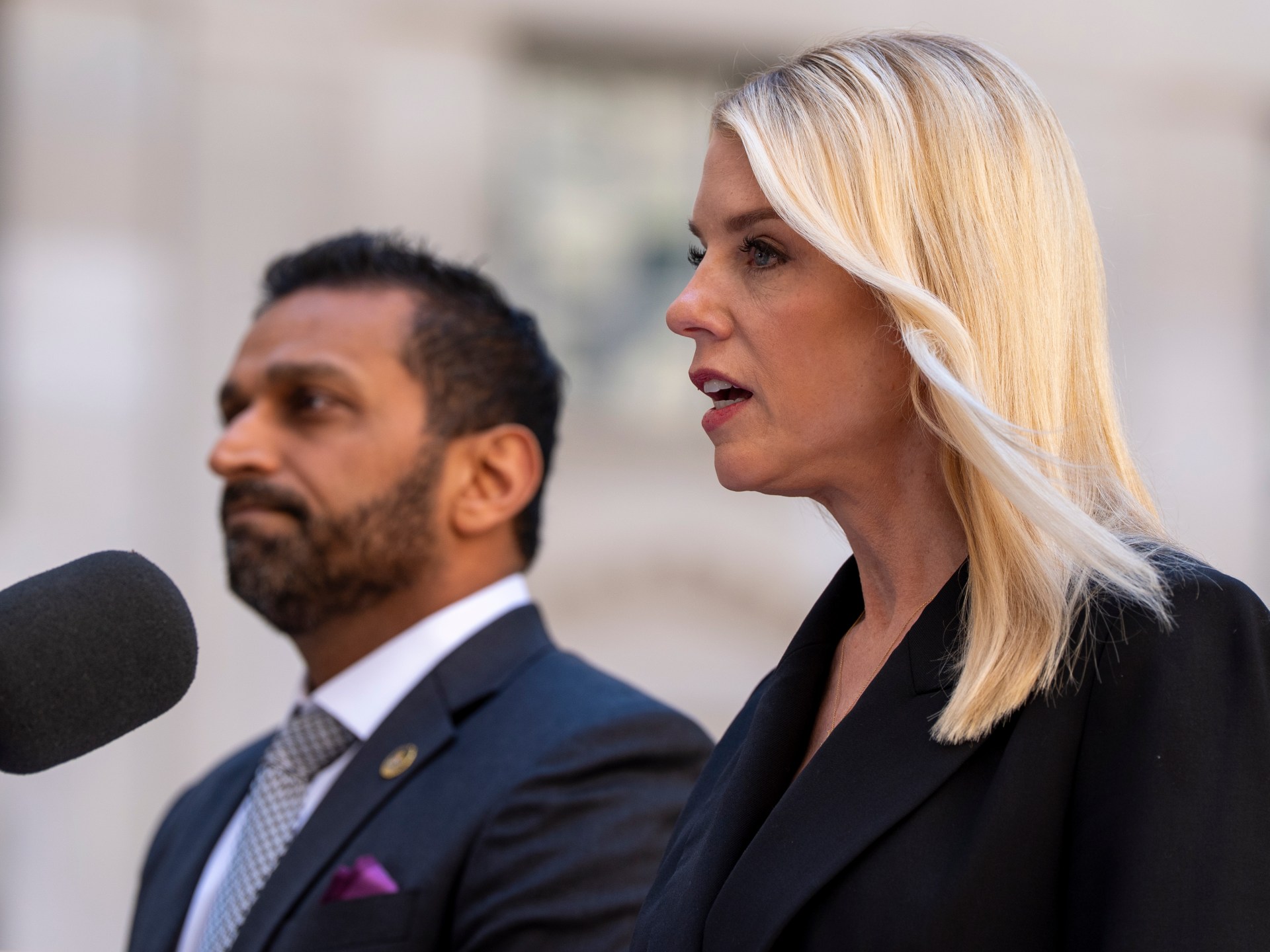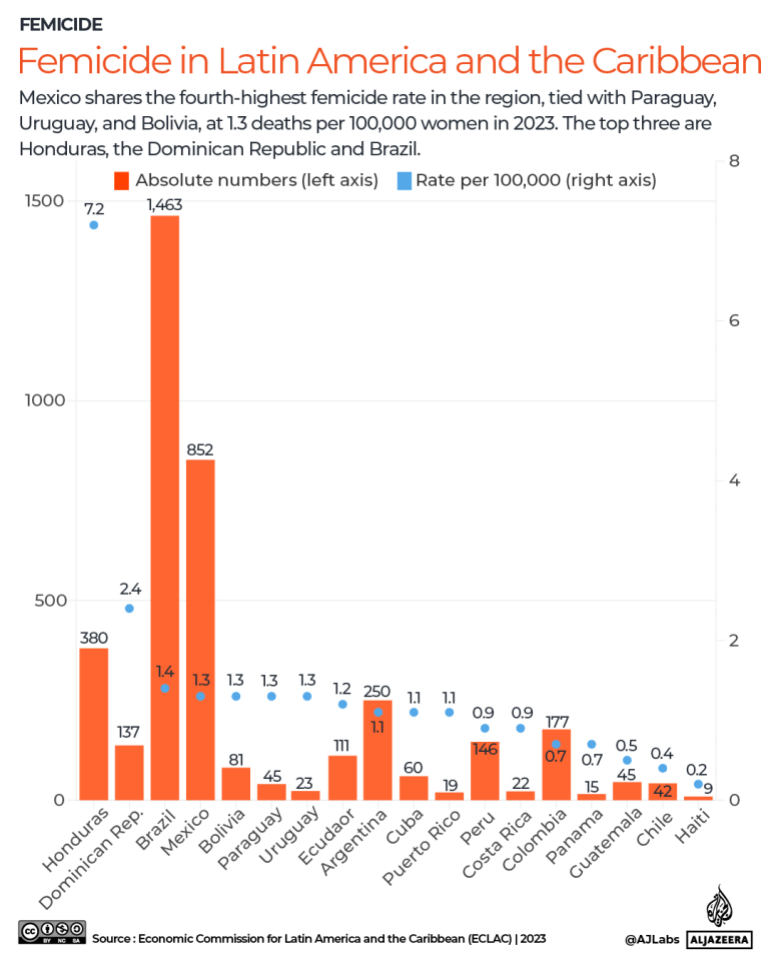A 23-year-old Mexican influencer, Valeria Marquez, was fatally shot while livestreaming on Tuesday.
Marquez, who had more than 113,000 followers on the platform, was broadcasting to her audience when the attack occurred.
According to a statement from the Jalisco state prosecutor’s office, the case is being investigated under femicide protocols, applied in instances where a woman is killed due to her gender.
What is femicide?
Femicide refers to gender-related killings against women and girls. According to the latest report from the United Nations Office on Drugs and Crime (UNODC) and UN Women, femicide is rising around the globe.
In 2023, a woman was intentionally killed every 10 minutes by a partner or family member.
Of the 85,000 women and girls killed across the world in 2023, 60 percent (51,000) were murdered by an intimate partner or a family member.
How common is femicide in Latin America and the Caribbean?
Honduras has the highest femicide rate with 7.2 women killed per 100,000 in 2023, followed by the Dominican Republic (2.4 per 100,000) and Brazil (1.4 per 100,000).
Mexico has the fourth-highest femicide rate in Latin America and the Caribbean, alongside Paraguay, Uruguay and Bolivia – all with 1.3 killings per 100,000 women in 2023.
In terms of absolute killings, Brazil saw the highest number of femicide cases with 1,463 women murdered. It was followed by Mexico, where 852 women were killed as a result of femicide in 2023. Honduras had the third-highest number, with 380 femicide cases.

Femicide is on the rise in Mexico
The rate of femicide is rising on the whole in the country, despite some fluctuations over the years.
It has become a major concern in Mexico with recorded cases rising significantly over the past decade. In 2015, femicides represented 19.8 percent of female homicides. This proportion had increased to 24.2 percent by 2024.
According to the UN Economic Commission for Latin America and the Caribbean (UNCLAC), in 2015, the rate of femicide in Mexico was 0.7 women per 100,000. In 2023, that number now stands at 1.3 per 100,000 women – though that’s down marginally from a peak of 1.6 per 100,000 in 2021. Gender-based violence against women grew globally during the COVID-19 pandemic, and Mexico was no exception.
While statistics from UNCLAC show the rate of femicide in Mexico has declined over the past three years, it remains a pronounced and often silent issue due to underreporting, say experts.
In Mexico, some 85 percent of women aged 15 and over who have experienced physical or sexual violence did not file a complaint, according to Mexico’s National Survey on the Dynamics of Household Relationships.
Where in Mexico has the worst rates of femicide?
The killing of Marquez took place just days before another woman, a mayoral candidate in the state of Veracruz, was also shot dead during a livestream alongside three other people.
According to Mexico’s National Public Security System (SNSP), the national rate of femicide was 1.18 per 100,000 in 2024.
The state of Morelos, in south-central Mexico, had the highest rate of femicide with 4.7 women per 100,000 murdered, followed by Chihuahua (2.35 per 100,000) and Tabasco (2.22 per 100,000).
In Jalisco state where Marquez was killed, the femicide rate was 0.63 per 100,000 in 2024.
Jalisco is ranked sixth out of Mexico’s 32 states, including Mexico City, for homicides, with 906 recorded there since the beginning of President Claudia Sheinbaum’s term in October 2024, according to the data consultancy TResearch.






